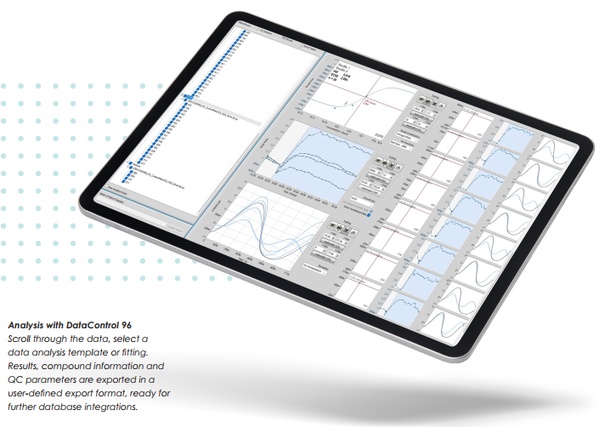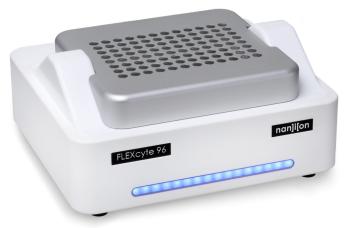FLEXcyte 96 – Measuring True Contractility
The FLEXcyte recording plates' special flexible substrates replicate in vivo conditions. Grown under such physiological settings, human induced pluripotent stem cell-derived cardiomyocytes exhibit positive inotropic responses without stimulation.
- Overview
- Specifications
- Links
Contractility in Physiological Conditions
The Langendorff Heart's conventionally constrained cardiac contractility techniques are transformed into a state-of-the-art, high-throughput method using FLEXcyte 96. The FLEXcyte recording plates' special flexible substrates replicate in vivo conditions. Grown under such physiological settings, human induced pluripotent stem cell-derived cardiomyocytes (hiPSC-CMs) exhibit positive inotropic responses without the need for further stimulation.
Key Features:
- Measurements of actual contractility
- Non-invasive and devoid of labels
- 96 simultaneous recordings
- Environment that promotes maturation
- Monitoring of acute and chronic impacts
- Pacing with optics
- Access to beating parameters in real time
- Perfect for investigations on efficacy and cardiotox
The FLEXcyte 96 expands the scope of cardiac cell contraction force measurements performed in vitro. The technique takes advantage of the maturity and mature responses of stem cell-derived cardiomyocytes to pharmacological substances in a higher throughput format by employing a well-defined, adaptable substrate for cardiac cells. The cells adhere to the flexible substrates in a 96-well plate as monolayers, and the contractility of the synchronized cell layers is measured. Thanks to this novel technology, recordings can be made in an environment that is similar to the native heart's mechanical circumstances. In cardiotoxicity, safety and efficacy screening, and fundamental research, the FLEXcyte 96 is a turn-key system for measuring structural and functional contraction forces.
The polydimethylsiloxane (PDMS) membranes of the FLEXcyte 96 disposable plates have a thickness of less than 10 μm and have undergone advanced surface modification to provide excellent mechanical support and physiological flexibility similar to natural human heart tissue. The membranes in the 96-well are lifted upwards by the cyclic contraction of the cardiomyocytes, which is deflected by the weight of the culture media. It is possible to compute mechanical stress by observing variations in deflection.
Cardiomyocytes produced from stem cells from multiple sources (Ncardia, FUJIFILM Cellular Dynamics, Inc. (FCDI), Axol, and NEXEL) have been used to validate the system. Cardiomyocytes generated from human induced pluripotent stem cells (hiPSC-CMs) exhibit positive inotropic responses; hence, there is no need for extra "cell maturation" stimulation. On cells produced from patients, cardiac contraction force can also be assessed.
Contractile pressures (mN/mm2) on heart muscle cells are consistently measured for safety, efficacy, and toxicity research in both acute and chronic time frames, ensuring that no subtleties of cytotoxic reactions are overlooked. Fully automated, the FLEXcyte 96 records data from 96 wells simultaneously.
Improve Your Cardiac Investigations
A pro-maturation effect on cultured human iPSC-derived cardiomyocytes requires flexibility. Two well-known characteristics of an adult cardiac phenotype are a decreasing beat rate and a progressive increase in the cell's contractile force. Both of the fundamental requirements needed to measure adult cardiac force are provided by the FLEXcyte 96 system.
Effective Data Processing and Exporting
The FLEXcyte 96 data recording and analysis software suite measures the contractile force of cardiomyocytes and facilitates online study of beating characteristics. The distinct Mean Beat Function automatically displays the standard deviation-enclosed average contractility pattern within the recorded well, signifying the cellular network's synchronization.

By making it simple and quick to load recorded files and user-defined analysis templates, Data Control 96 speeds up data analysis.
- Detection of contractile force (mN/mm2)
- Data recalculated instantly when a parameter is changed
- A large selection of QC choices
- Results from templated data analysis can be obtained quickly
- Incredibly flexible database exporting
You can also visit site of the manufacturer.


